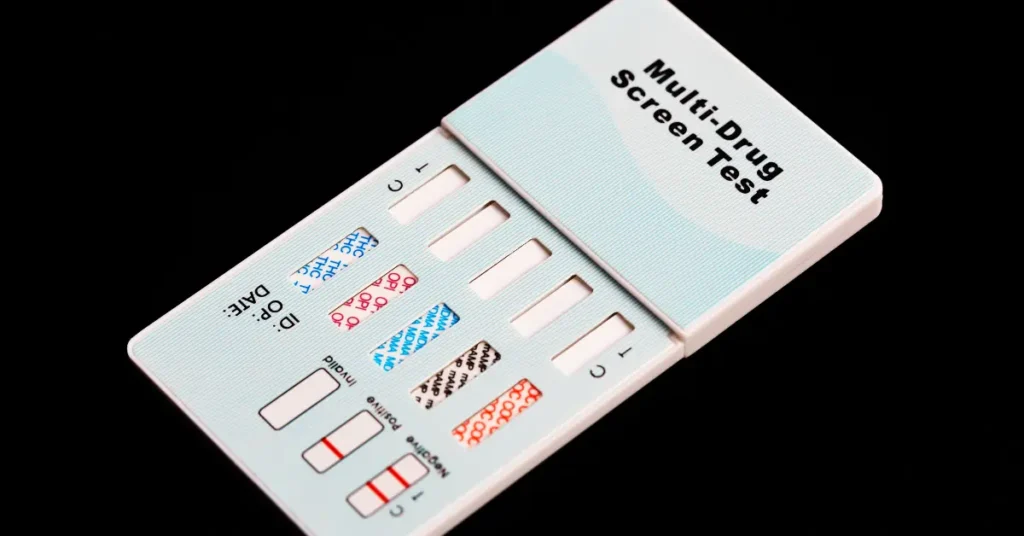
Home drug testing kits have become increasingly popular as a convenient means of detecting drug use in various settings, from homes to workplaces.
However, many wonder about their reliability compared to traditional lab tests.
This article will explore the differences between home drug testing kits and lab tests, highlighting their accuracy, usability, and implications.
Understanding these distinctions is crucial for making informed decisions about drug testing methods.
Accuracy of Home Drug Testing Kits
Home drug testing kits offer a quick and discreet solution for individuals and organisations needing immediate screening.
Their rapid turnaround time, often within minutes, is particularly beneficial in situations requiring swift action, such as pre-employment screening or random checks in the workplace.

However, despite their convenience, the accuracy of home kits can be influenced by various factors. For instance, the sensitivity and specificity of the kit’s detection method are crucial in determining its reliability.
High-quality kits with advanced technology deliver more accurate results, minimising the risk of false positives or negatives.
Additionally, proper sample collection and handling are paramount to obtaining precise outcomes. Users must follow instructions meticulously, including adhering to specific time frames and sample collection and testing procedures.
Moreover, considering confirmatory testing, such as sending samples to a laboratory for further analysis, can provide additional assurance, especially in cases where the results carry significant implications. By understanding these nuances and taking necessary precautions, individuals can maximise the reliability of home drug testing kits and make informed decisions based on trustworthy information.
Accuracy of Lab Tests
Lab tests in professional settings such as clinics or laboratories offer comprehensive analysis using advanced techniques. These tests are typically more accurate and reliable than home kits, detecting a broader range of substances at lower thresholds.
Moreover, they undergo strict quality control measures to minimise errors and ensure precise results. However, lab testing may involve longer turnaround times and higher costs, limiting their practicality for immediate or frequent screening.

Despite their higher accuracy, lab tests may also be subject to delays in obtaining results due to sample processing and analysis protocols, which can range from hours to days, depending on the facility’s workload.
Additionally, while home drug testing kits provide instant results, lab tests offer a more thorough examination, identifying specific drugs and their concentrations with greater precision.
This nuanced analysis is especially crucial in scenarios where the detection of specific substances or accurate quantification is essential for informed decision-making, such as legal proceedings or medical diagnoses. Therefore, while lab tests offer unparalleled accuracy and reliability, individuals and organisations must weigh the trade-offs between precision, speed, and cost when choosing between home testing and laboratory analysis.
Usability and Convenience
The primary advantages of home drug testing kits are their ease of use and accessibility. They require minimal expertise and can be administered discreetly in the privacy of one’s home or workplace.

This convenience makes them particularly appealing for parents monitoring their children, employers enforcing drug policies, or individuals seeking quick answers. In contrast, lab tests often entail scheduling appointments, visiting a clinic, and waiting for results, which can be time-consuming and less convenient for spontaneous or urgent testing needs.
Additionally, the portability of home drug testing kits allows for testing in various settings, such as during travel or at events, offering flexibility and convenience beyond traditional lab-based testing.
Furthermore, the rapid turnaround time of home kits enables immediate action and intervention in situations where timely detection is crucial, such as suspected drug use among adolescents or workplace safety concerns.
Cost Considerations

Home drug testing kits offer a cost-effective alternative to lab tests, especially for routine or occasional screening.
They are affordable and eliminate the need for professional fees or laboratory expenses. This affordability makes them accessible to a wider audience, including individuals and organisations with budget constraints.
However, it’s essential to balance cost savings with the potential trade-offs in accuracy and reliability, especially for critical or high-stakes situations where precision is paramount.
While the upfront cost of home drug testing kits may seem appealing, it’s crucial to consider the long-term implications. For example, repeated testing over time can accumulate expenses, particularly if confirmatory tests are necessary to validate results. Additionally, some inexpensive kits may sacrifice accuracy for affordability, leading to false positives or negatives that could have serious consequences.
Therefore, savvy consumers weigh the initial investment against the reliability and integrity of the testing method to make informed decisions that prioritise both cost-effectiveness and quality assurance.
Factors Influencing Reliability

Several factors significantly impact the reliability of home drug testing kits and lab tests. The sensitivity and specificity of the testing method are crucial, as they determine the ability to detect the presence of drugs in a sample accurately.
For instance, some kits may be more sensitive to certain substances than others, leading to variations in results. Additionally, the quality of the sample collected is essential; factors such as proper collection technique and sample integrity can affect the accuracy of the test. Environmental conditions, such as temperature and humidity, can also influence the sample’s stability and the testing materials’ performance.
Moreover, the presence of interfering substances, such as medications or dietary supplements, may impact the test results by producing false positives or negatives.
Proper storage, handling, and interpretation of results minimise errors and ensure reliable outcomes. For example, storing kits in a cool, dry place and following strict protocols during sample collection and analysis can help maintain accuracy.
Overall, understanding these factors and implementing appropriate measures are key to optimising the reliability of drug testing, regardless of the chosen method.
Navigating Drug Testing Options
Home drug testing kits offer a convenient and cost-effective means of screening for drug use, but their reliability may vary compared to lab tests.
While home kits provide rapid results and privacy, they may lack the comprehensive analysis and quality assurance of lab-based testing. Understanding the differences between these methods empowers individuals and organisations to choose the most suitable approach based on their specific needs and priorities.
Whether opting for the convenience of home testing or the precision of lab analysis, informed decision-making is key to promoting drug-free environments and safeguarding well-being.
This is a collaborative post.
References
https://www.healthline.com/health/at-home-drug-test#how-they-work
TAGS:

Jennifer is the co-founder of menPsyche. She holds an Applied Science degree in Public Health & Health Promotion and authored the ‘Personal Disaster’ book series.
Jennifer has a vast range of experience across many domains, including extensive international exposure.



